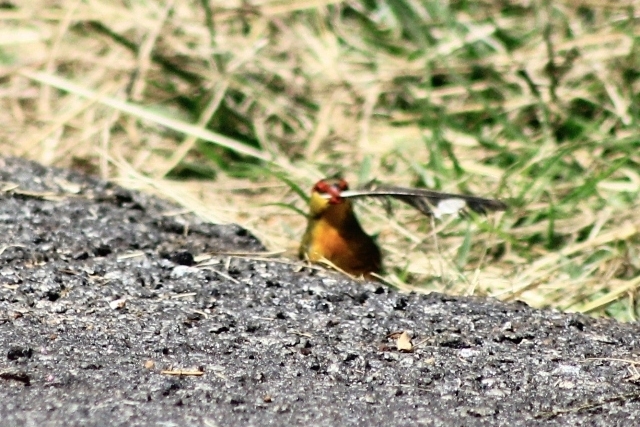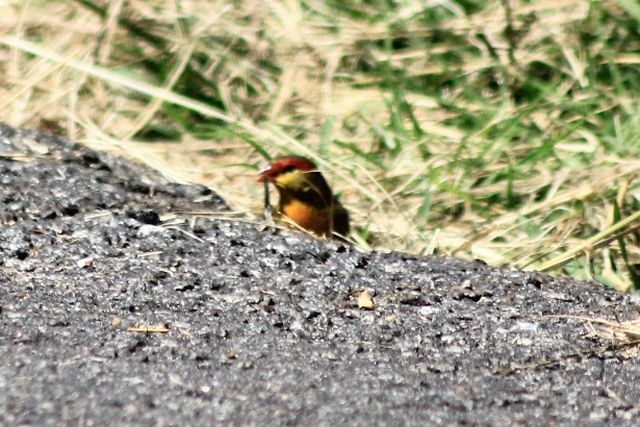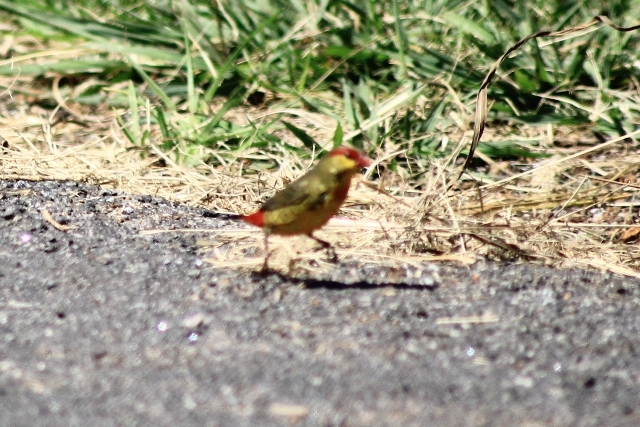Order: Passeriformes. Family: Estrildidae
Description
The Swee Waxbill is 9–10 cm. The crimson rump and upper tail coverts and the yellow belly are distinctive in the field. It has a grey head and breast, pale yellow belly, olive back and wings, red lower back and rump, and a black tail. The upper mandible is black and the lower red. The grey head, black face and red rump are diagnostic of male. The upper mandible is black, the lower mandible red.
The female's face is grey and is indistinguishable in the field from Yellow-bellied Waxbill; however, the ranges of the two species do not overlap.
Juveniles resemble females, but are much duller than the female and have an all-black bill.
Distribution
Endemic to southern Africa. Coccopygia melanotis can be found in Zimbabwe, South Africa, Lesotho, and Eswatini (formerly Swaziland), occurring from the Limpopo Province south through Eswatini and the extreme south-west of Mozambique to KwaZulu-Natal, extending east to the Eastern and Western Cape.
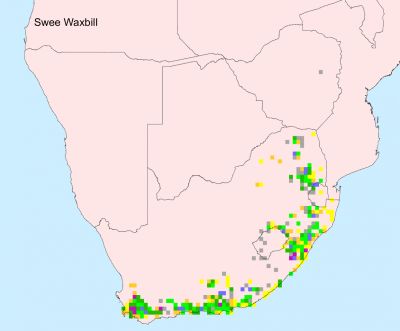
Habitat
It generally prefers edges of montane and coastal forest, wooded valleys in fynbos, bushy hillsides, grassy clearings in woodland, plantations and gardens.
Diet
It mainly eats seeds taken directly from grasses, supplemented with insects caught on the ground and in vegetation.
Breeding
A monogamous, solitary nester. The nest is built by both sexes, consisting of an oval-shaped structure with a side-top entrance, built of dry grass and lined with soft grass inflorescences, feathers and plant down. It is typically placed in a tree, bush, creeper, garden pergola or Aloe, anywhere from about 2-9m above ground. Egg-laying season is from October-April. It lays 3-9 eggs, although the larger clutch sizes may have been laid by two females, which are incubated by both sexes for about 12-13 days. The chicks are fed by both parents, leaving the nest after about 19-22 days, becoming fully independent about 15-19 days later.
Parasitised by Pin-tailed Whydah.
Call
The contact call is a soft swee, swee. Song, a nasal, musical yet very soft whistled notes. Listen to Bird Call.
Status
Common but localised resident; endemic. Gregarious.



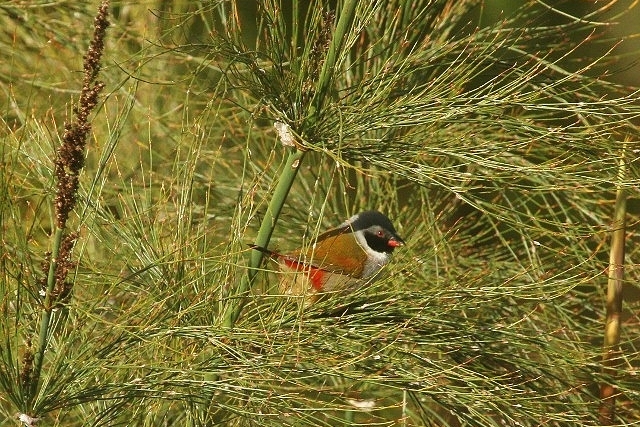
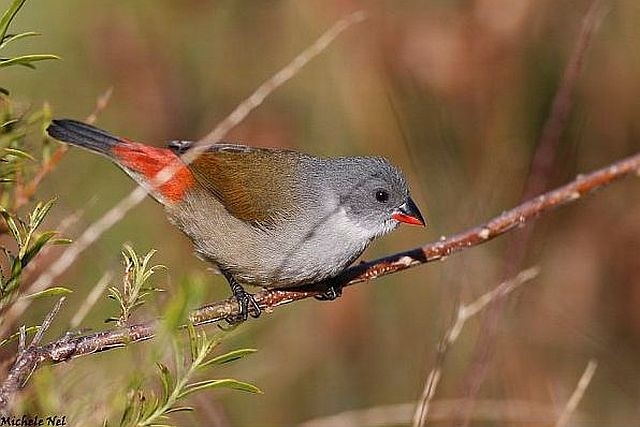 © Michele Nel
© Michele Nel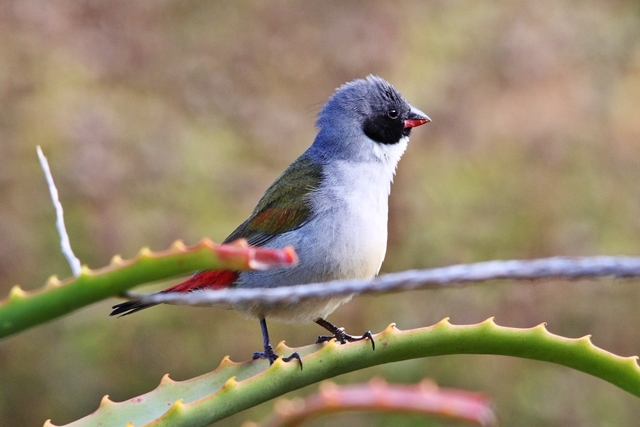 © Flutterby
© Flutterby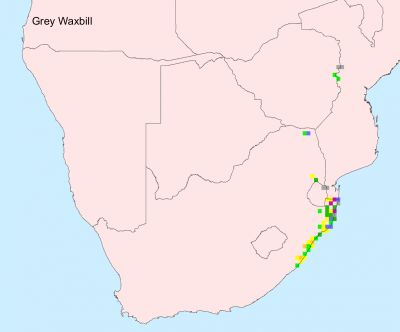
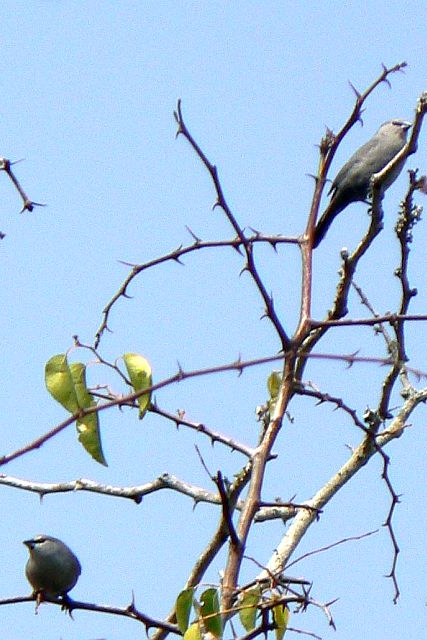 © Toko
© Toko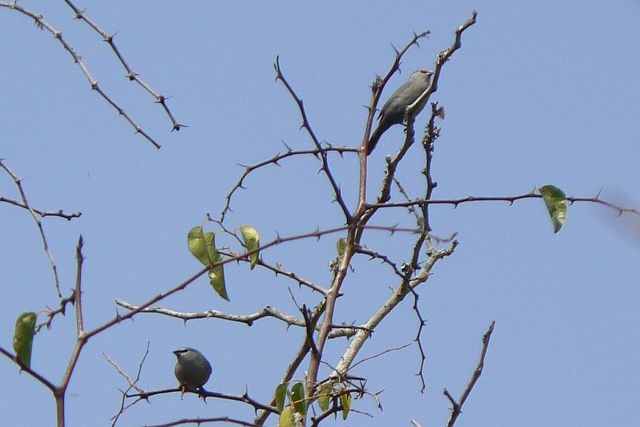 © Toko
© Toko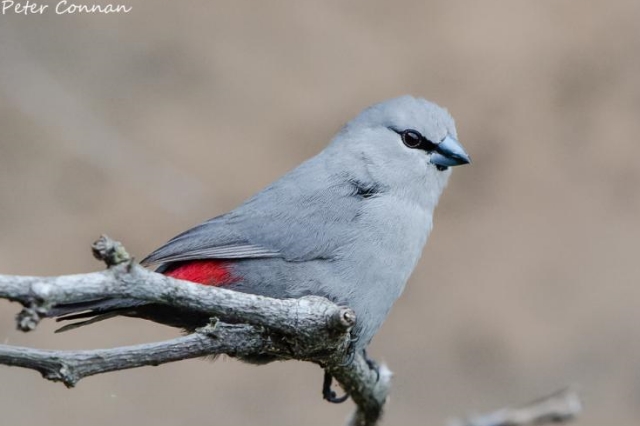 © Peter Connan
© Peter Connan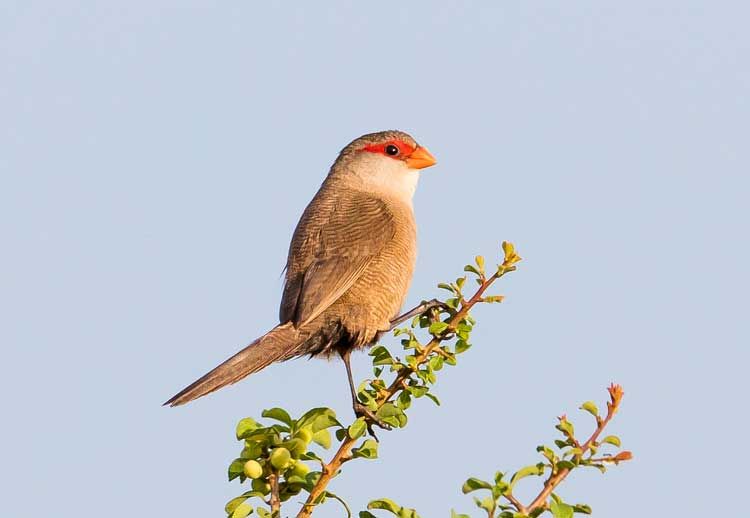 © Pumbaa
© Pumbaa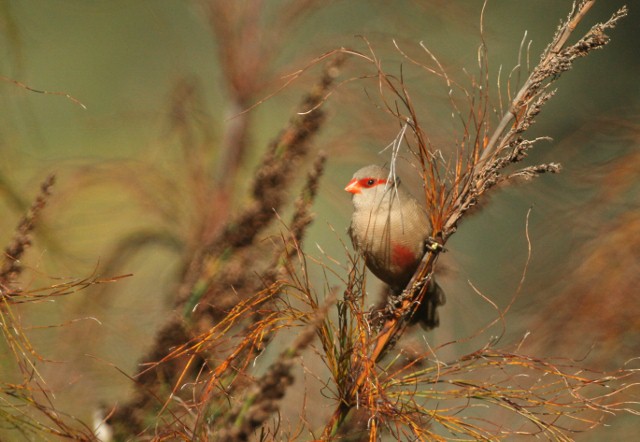 © nan
© nan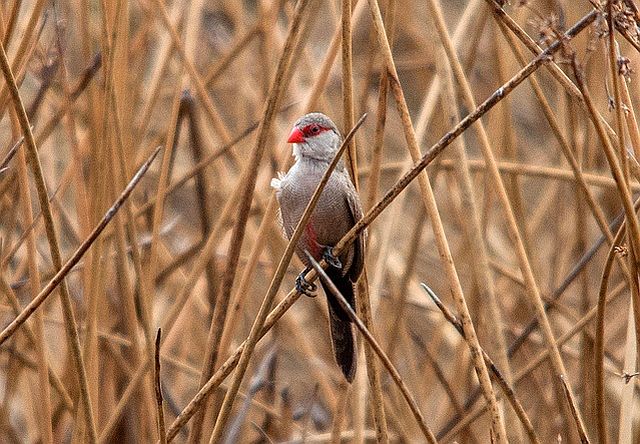 © Joan
© Joan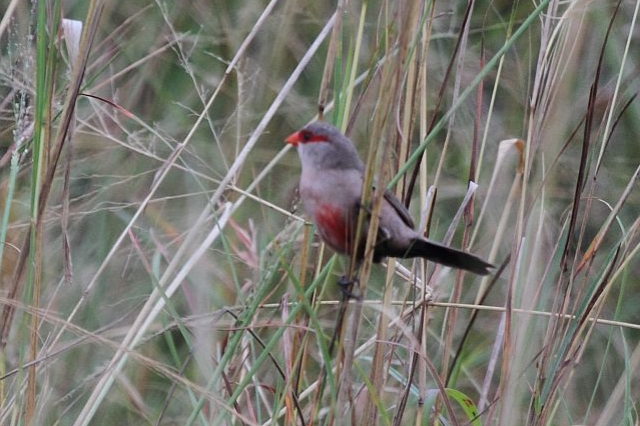 © Duke
© Duke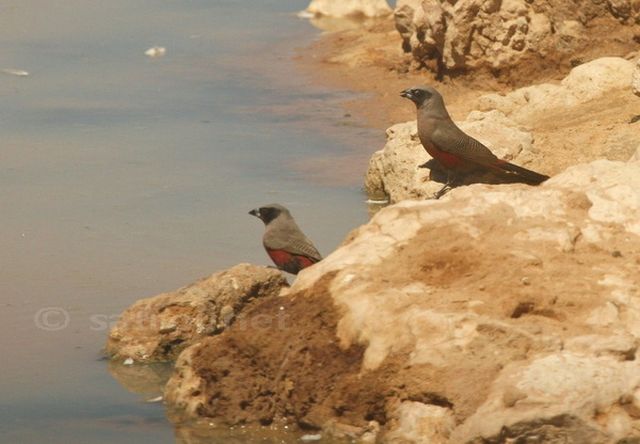
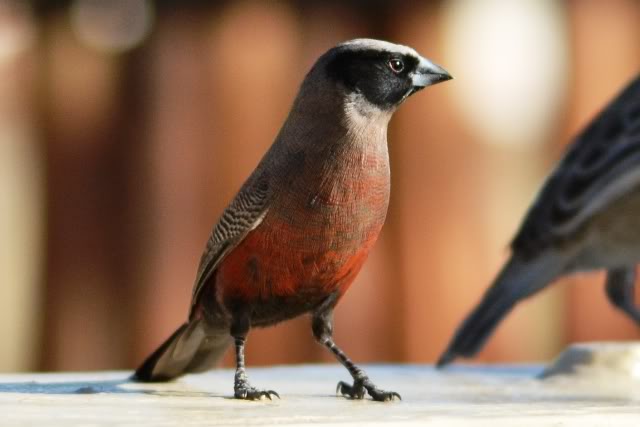 © Mel
© Mel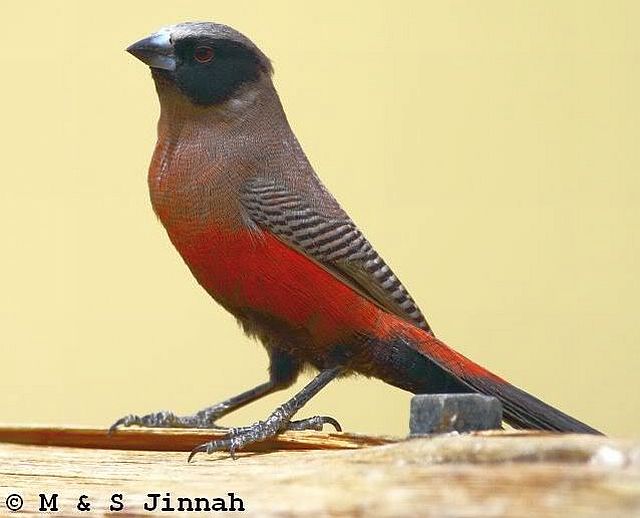 © Sharifa & Duke
© Sharifa & Duke